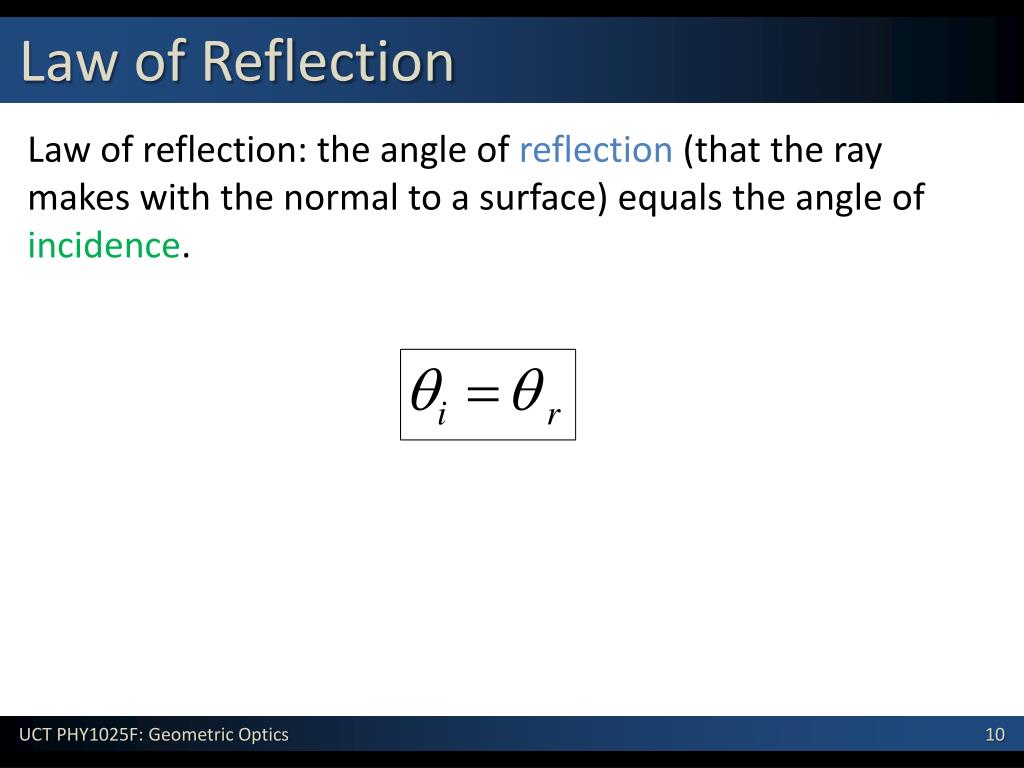

(For example, θ c = 48.6° for water and air.) But the angle for total internal reflection can be measured and used to determine the index of refraction of a medium. The reflected vector can be found with the following formula: Keep in mind, in the preceding equation, is a unit length vector. If values for n 1 and n 2 are entered above, the critical angle θ c for total internal reflection will be calculated. Then the critical angle for internal reflection is θ c = degrees. The light must be incident on a medium of lesser index. For non-normal incidence, the transmission and reflection coefficients can be calculated from the Fresnel equations.įor total internal reflection of light from a medium of index of refraction The normal incidence reflection coefficient can be calculated from the indices of refraction. Total internal reflection is important in fiber optics and is employed in polarizing prisms.įor any angle of incidence less than the critical angle, part of the incident light will be transmitted and part will be reflected. To do this for y 3, your x-coordinate will stay the same for both points. The critical angle can be calculated from Snell's law by setting the refraction angle equal to 90°. The closest point on the line should then be the midpoint of the point and its reflection.

The exit angle will then approach 90° for some criticalincident angle θ c, and for incident angles greater than the critical angle there will be total internal reflection. Such reflection is commonly called " internal reflection". When light is incident upon a medium of lesser index of refraction, the ray is bent away from the normal, so the exit angle is greater than the incident angle. You can look the bounce formula this way: (V dot N)N is the movement towards the plane along the plane normal.

We need to negate the formula, giving us: V new -2 (V dot N)N + V. Now this isnt just reflecting the velocity, its a bounce, so we actually want -R. 25.4 Reflection Formulas 25.4.1, ( 1 s ) 2 ( 2 ) s cos ( 1 2 s ) ( s ) ( s ). Total Internal Reflection Total Internal Reflection The actual formula for reflecting a vector then is: R 2 (V dot N)N - V.


 0 kommentar(er)
0 kommentar(er)
